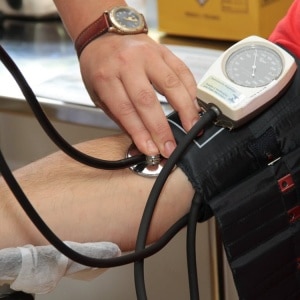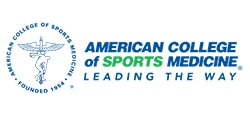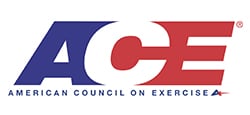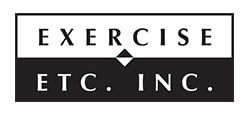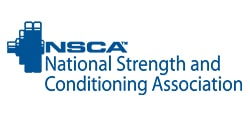 August 2025
August 2025
Nordic Hamstring Exercise Really Works!
There are many reasons to strengthen the hamstrings – the muscles of the posterior thigh. The. hammies, as we gym rats call them, have been implicated in ACL and, of course, hamstring tendon injuries for years. We have addressed these here, here, and here. We’ve all seen elite athletes pull up while sprinting or jumping. But many normal people also injure the muscle doing simple activities such as bending over to pick something up from the floor or playing sports such as tennis and pickleball. In sports training, primary prevention is the Holy Grail. Rehabilitation is, well, too late.
The Nordic hamstring exercise (NHE) involves kneeling, with someone holding the feet, and leaning forward from the knees to strengthen the muscles eccentrically. Most injuries occur when the muscle contracts while being lengthened; this is referred to as an eccentric contraction. Having been demonstrated as effective in preventing both hamstring and ACL tears, a group of researchers at Stanford wanted to find out what actually happens in the muscle from 9 weeks of NHE using microendoscopy, a novel protocol, to observe the microscopic adaptations of the muscle tissue itself.
They found significant changes in the outer/lateral components of the hamstrings – the biceps femoris. Sarcomeres, the functional unit of a muscle, were getting added end to end in those training with NHE.
“This growth pattern lengthens the muscle fibers and could decrease the amount of stretch each sarcomere experiences, protecting muscle fibers from overstretching.” Interestingly, these add-ons began to diminish after merely 3 weeks of ceasing NHE.
The take home message for athletic trainers and trainees is that NHE cannot be a short-term pre-season preparatory routine. They must be continued at least twice a week to be effective throughout the season.
Training & Conditioning, Oct. 2024
Short-Term Predictors Predict 30-Year Heart Disease Risk
Simple blood tests such as C-reactive protein (Crp), low-density lipoprotein (LDL) cholesterol, and lipoprotein(a) (LPa) levels are decent 5- and 10-year predictors of cardiovascular risk. The results of these tests allow for pharmaceutical and lifestyle interventions that might mitigate that risk. A study explored the possibility that these tests can have the power to predict risk over a longer period of time – 30 years.
Nearly 28,000 initially healthy women’s blood tests were compared to their health status 30 years later. The “primary end point was a first major adverse cardiovascular event, which was a composite of myocardial infarction, coronary revascularization, stroke, or death” due to heart disease. During that period, there were 3662 first major cardiac events. Having divided the scores of the three tests into quintiles, they found that those in the highest quintiles were indeed at the greatest risk; that each blood test independently had strong predictive powers; and that combining the three tests yielded the best prediction of future risk.
“These data support efforts to extend strategies for the primary prevention of atherosclerotic events beyond traditional 10-year estimates of risk.”
In other words, such standard biomarkers as Crp, LDL, and LPa, individually and combined, offer patients an opportunity to grab the tiger by the tail and change lifestyle habits that are contraindicated and start a regimen of medications that could avert both short- and long-term adverse consequences.
NEJM Aug. 2024
Tid Bits
A team of Japanese researchers screened the “entire genome for genetic variants associated with passive muscle stiffness”. Genome testing of 350 young Japanese individuals allowed them to find genes that were associated with ultrasound shear wave elastography of hamstrings. Two loci on chromosome 11 were found to “significantly [elevate] expression of extracellular matrix-related genes” that might increase risk of muscle strain injuries. MSSE June 2025
- Post-total knee replacement (TKR) therapy often does strengthening with both legs on the assumption even the non-surgical leg has deteriorated during the run-up to surgery. Exercises like the squat and leg press are facilitated by using both legs. A study compared the feasibility and outcomes of unilateral therapy of 6 sessions over 3 weeks, measuring isometric strength, knee flexibility, thigh circumference, rising from a chair, and walking ability in 24 patients. They found that one-leg training was not only feasible; it actually improved strength in the surgical leg better than bilateral training. J Rehabil Med. Apr. 2023
A Journal of Nutrition study (June 2023) compared the muscle hypertrophy (size) and strength gains of a 10-week high-volume (5 days/wk) resistance training program in those who ate an omnivorous high protein (O) diet vs those eating a vegan or vegetarian high protein (V) diet. Both groups ate 2 grams of protein/kg of body weight/day but the V group ate no animal products, just pulses, and a soy & vegan supplement. Ready? The V increased lean mass, squat strength, and bench press strength to a greater degree than did the O group. All other measures were equal: thigh muscle volume, thigh muscle cross sectional area, and knee extension strength. Perhaps the V had to consume more calories overall to meet protein goals. If so, the answer is clear: eat lot of calories to get lots of protein to get bigger and stronger.

 August 2025
August 2025
